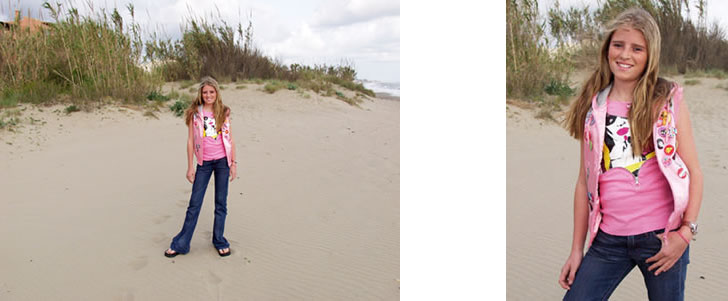Photography - Cropping and Framing
Filling the frame. What to leave out, what to put in and where to put it.
 Close cropping for maximum effect
Close cropping for maximum effect
Tip - One of the easiest ways to improve your photography is with careful attention to framing. Look into the corners of the viewfinder to see what is there. Do you need all that background? Can you get closer to your subject or zoom in? Would the picture look better as an upright or landscape?
The most common mistake people make when taking pictures is not filling the frame with the subject. If it's a photo of granny waving from the doorstep, let's just see granny and the door, not half the houses in the street with a small granny shaped blob in the middle. I think the culprit for this phenomenon is the focusing aid in the center of the viewfinder. Most cameras have some sort of circle or rectangle etched onto the glass and we are inclined to think, in our less thoughtful moments, that this is the whole picture area. Take a moment to glance around the viewfinder to see what you have got at the edges and especially in the corners. Watch out for clutter in the background, that lamppost growing out of granny's head. Make sure that everything in the viewfinder is there because you want it to be.
Landscape or Portrait?
A lot of people never, ever turn their camera on it's side and shoot an upright picture. Yes, it can be a little awkward to hold until you get used to it but, what a difference it can make to the picture. If you are taking a picture of one person then it is essential to shoot upright, you waste so much of the picture area at the sides if you don't.
Even when you are shooting landscapes, you will find that, sometimes, the picture will look more dynamic with an upright frame.
Always think, with every picture you take, should this be an upright or a horizontal view? Usually the answer is obvious and dictated by the shape of the composition but sometimes, for instance when the composition is square, the best choice is not obvious. In this case take two pictures, one of each.

The picture on the left is a typical snapshot, two miles of coastline with a pink blob in the middle.
Turning the camera on its side and moving in a little closer, as in the picture on the right, gives us a much better picture of the girl and we can still see enough background to get the message that we are on the beach. For the sake of the page layout, I have made these two pictures the same height. In fact they are the same size, if you can imagine them in their original dimensions the girl is ten times bigger in the photo on the right.
Can't I leave the cropping until later?
If you are printing your own pictures then you get a second chance to get the cropping right but, don't rely on this to make up for sloppy camera technique. If you crop your pictures afterwards in the computer or in the darkroom, you are throwing away quality. You are wasting some of those precious pixels that you paid so much for. What's the point in having a camera with five million pixels if you are only going to use three million of them?
An introduction to composition, explaining the 'rule of thirds' and the use of diagonals.
Watch out for those ugly dustbins!
The most important rule of composition.
How to fill your frame with your subject.
Another important aspect of composition.
What it is and how to use it creatively.
How to use Motion Blur, and a discussion on when it's appropriate.

If you enjoyed this page you might
be interested in my eBook
Learn Photography with Geoff Lawrence